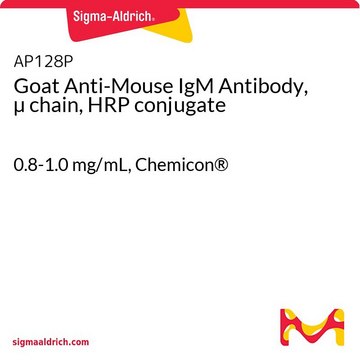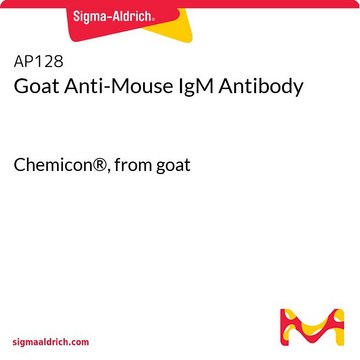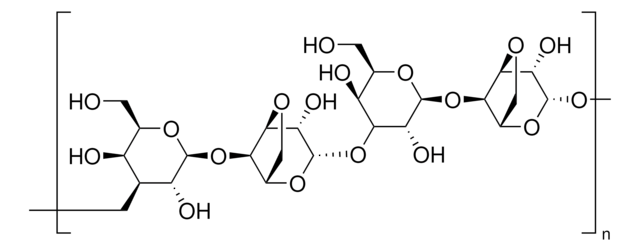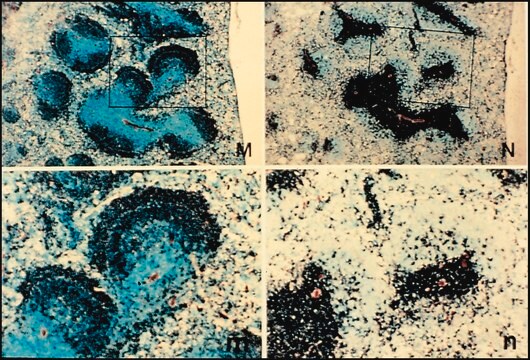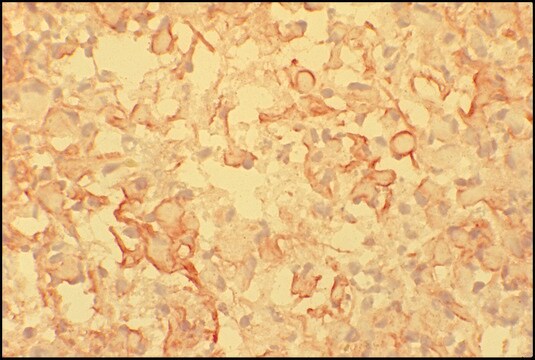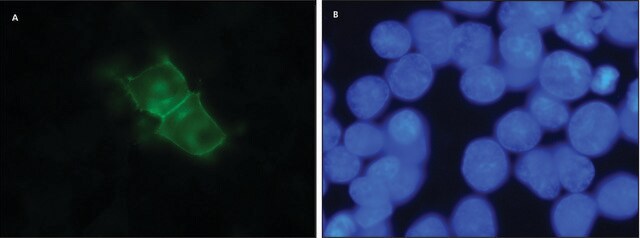A4540
Anti-Mouse IgM (μ-chain specific)−Agarose antibody produced in goat
IgG fraction of antiserum, saline suspension
Synonim(y):
Anty-Mysie IgM, Kozia anty-Mysia IgM
About This Item
Polecane produkty
pochodzenie biologiczne
goat
białko sprzężone
agarose conjugate
forma przeciwciała
IgG fraction of antiserum
rodzaj przeciwciała
secondary antibodies
klon
polyclonal
Formularz
saline suspension
reaktywność gatunkowa
mouse
zakres etykietowania
≥5 mg per mL
metody
Ouchterlony double diffusion: suitable
pojemność
0.4 mg binding capacity
temp. przechowywania
2-8°C
docelowa modyfikacja potranslacyjna
unmodified
Powiązane kategorie
Opis ogólny
Goat anti-mouse IgM (μ-chain specific)-agarose antibody is specific for mouse IgM when tested against purified mouse IgA, IgG (all subclasses), and IgM myeloma proteins.
Zastosowanie
Chromatin immunoprecipitation (1 paper)
Działania biochem./fizjol.
Postać fizyczna
Oświadczenie o zrzeczeniu się odpowiedzialności
Nie możesz znaleźć właściwego produktu?
Wypróbuj nasz Narzędzie selektora produktów.
Kod klasy składowania
10 - Combustible liquids
Klasa zagrożenia wodnego (WGK)
WGK 3
Temperatura zapłonu (°F)
Not applicable
Temperatura zapłonu (°C)
Not applicable
Wybierz jedną z najnowszych wersji:
Certyfikaty analizy (CoA)
Nie widzisz odpowiedniej wersji?
Jeśli potrzebujesz konkretnej wersji, możesz wyszukać konkretny certyfikat według numeru partii lub serii.
Masz już ten produkt?
Dokumenty związane z niedawno zakupionymi produktami zostały zamieszczone w Bibliotece dokumentów.
Klienci oglądali również te produkty
Nasz zespół naukowców ma doświadczenie we wszystkich obszarach badań, w tym w naukach przyrodniczych, materiałoznawstwie, syntezie chemicznej, chromatografii, analityce i wielu innych dziedzinach.
Skontaktuj się z zespołem ds. pomocy technicznej